Have you ever - been to Tokyo, Japan
Getting to Tokyo from Narita airport - Keisei Skyliner
We arrived at Narita Airport and there are multiple ways you can get from airport to central Tokyo which we find reference in this official Tokyo Travel Guide. The easiest way is by train through the JR Narita express (NEX) but we did not get the JR passes. We actually did not plan to use the JR lines at all within Tokyo and hence we went for the alternative, which is taking the Keisei Skyliner from Narita airport with transfer to Tokyo station. You can purchase the ticket from the Skyliner & Keisei information centre, taking the escalator one floor down after the exit. Also, Keisei offers a combined package of skyline ride to central Tokyo and day passes for subway ride in Tokyo with discounts.
A one way skyline ride to Tokyo costs about 2,520 Yen for adult and almost half price for children. We bought a one way ride to Tokyo (as we will be returning from Haneda Airport instead) with 3 days subway pass in Tokyo costing 3,540 Yen for each adult. There is a saving of 1,680 Yen as the normal price for subway 3 days pass is 9,00 Yen (2,700 Yen for 3 days) per adult if you purchase it at the subway station. If you will be in Tokyo for more than 3 days, you can subsequently get another day passes available in 24, 48 and 72 hours at Tokyo Metro Pass offices and Tourists information and some other tourist information centres, as well as Bic Camera which is everywhere in Tokyo. Bear in mind that you will need to show your passport upon purchase of these day passes.
An alternative way to get from Narita airport to central Tokyo is via the limousine bus departing from the airport every 15-20 minutes, which is a less popular option.
Getting around in Tokyo - Subway Day Passes
To get around within Tokyo is actually fairly simple but probably confusing for first timer. To summarise, there are different operators: Tokyo Metro, Tokyo Toei and also the Japan Rail (JR) commonly known to travellers which you can use your JR passes should you have. With the subway day passes, you can basically hop on to any trains covered by Tokyo Metro and Toei lines, which can get you almost everywhere within Tokyo. You can't use a JR pass on the subway lines and vice versa the day passes are not applicable to be used on any of the JR lines as well. The day passes are like a travel package offered by both Metro and Toei operators to tourists.
You can also purchase a single trip Metro or Toei ticket at any of the subway station using the machine and the price per trip ranging from 160 Yen to 330 Yen depending on where you are going and which lines you are using. Bear in mind that Metro and Toei are both independent operators so the ticket and price needed for Metro and Toei lines varies.
There are also IC cards - Suica and Pasmo which work like a reload card and can be used also at some vending machines and convenient stores.
One thing I realised when I was getting around in Tokyo using Google Map, the default route shown tend to always be the JR lines and if you don't have the JR pass you may be thinking that you can't get around without the JR pass. However, a quick tip is that you just need to filter off "Train" from your Google Map route option and to just remain the "underground" option and it will basically shows you all the available options to get around using the Metro and Toei lines, utilising your day passes. However, if you have JR pass, JR lines will be the better option which is faster with less transfer most of the times.
There are just so many things to see and places to visit in just Tokyo itself. So where to go and what to see in Tokyo? Here's where I have been and what I have seen in 8D7N in Tokyo.
Asakusa
Sensoji Temple
This is one of the oldest and most popular temple in Tokyo. The popular landmark here is the famous red large lantern at the main entrance gate (the Kaminarimon Gate aka Thunder Gate) and a five storied pagoda of Sensoji built next to it. It is packed with tourists who want to get a picture with this landmark in Asakusa. This place is bigger than you think and you can easily spend half of the day strolling around the area.
Once you enter from Kaminarimon Gate and pass through the Nakamise Dori, a shopping district selling various kinds of Japanese snacks and souvenirs, you will see Omikuji along Jokoro before the Sensoji Temple's main hall and it is worth giving it a try. Omikuji is Japanese fortune telling paper strips and it is similar to those that we commonly see in buddhist temple. Drop in 100 Yen, draw a stick and the number on the stick will draw you either a good fortune or great curse or something in the middle. It is believed that if you draw a bad fortune, tie the paper strips on the branches set up and supposedly it will protect you from bad luck. Jokoro is the area in front of the Sensoji Temple's main hall and there is a large incense burner placed here where people "smoked" themselves before entering the temple.
Chozuya is the purification area where you are supposed to "purify" yourself before entering the main hall for worship and you will spot this in most of the temples and shrines in Japan. What you need to do - pour some water on your hand and mouth.
Here's the Sensoji Temple's main hall and people would be lining up to pray by putting their hands together in front of your chest. You are also encouraged to make some monetary offer before your pray.
Japanese wooden plates where you can write your wishes on the plates and hang it there.
Right next to the Sensoji Temple is the Asakusa Shrine. Temples and shrines are commonly seen in Japan but there is actually difference between these two. Temples are Buddhist and Shrines are Shinto. Shintoism is originated in Japan and the idea is that there are various kinds of gods in this world, including trees, rivers and mountains etc. Shrines usually have torii gate or sacred gate at the entrance and it symbolises the gate between our world and the world of gods. Larger shrines are also known as Jingu like the famous Meiji Jingu.
Nakamise Dori - Japanese traditional Shopping Street
Right after you enter from the Kaminarimon Gate and what comes into view is the Nakamise Dori, the Japanese traditional shopping street and you can find all kinds of Japanese confectionaries, snacks, ice cream, traditional souvenirs etc here. It is usually really busy and crowded. There are some alleys behind the Nakamise Dori with fewer shops, less crowded but also worth discovering.
Japanese rice crackers (Senbei) with various flavours. It is freshly made and grilled on the spot.
The nicely wrapped gift box makes it perfect for souvenirs. This shop is in the middle of the street and the smell the crackers makes it impossible to miss.
Found this Jumbo Melon Bun at Nishi Sando, a covered shopping street just a walking distance away from Sensoji Temple (take a short walk to the left after the temple). Look out for Kagetsudo Main Store for the some crispy-on-the-outside-and-fluffy-on-the-inside melon bun.
Kibi Dango is another Japanese's favourite which is chewy sweet dumplings made with mochi flour covered with either soy bean powder, soy sauce and others to make it flavourful. There is a shop selling Kibi Dango at Nakamise's main street but we stumbled upon a shop just on the right, down the street from the main street selling different flavours of the dumplings such as matcha with red beans.
So as you can see that I have actually rented a kimono and get myself dressed before making a visit to the temple. There are many kimono rental shops within the vicinity and the entire experience is hassle free. It is recommended that you do your research online and made reservation prior to the visit for discounted price (almost double the price if you walk in!). I found mine from Asakusa Kimono Rental Koto, which is just few minutes walk away from the subway station and Kaminarimon Gate. You can refer to the website for different packages and all you need to do is to choose the date and time of your visit and show them the booking confirmation upon visit. Payment will be done at the counter and be sure to return it before the specified time. There are many designs in the shop for your selection and all come with pretty colours. It comes with a complimentary hairdo as well and all the dressing up will be handled by the professional Oba-san. The experience of walking around Asakusa with kimono should really be part of your bucket list.
Asakusa Tourist Cultural Information Centre
Get the view of Sensoji Temple and Asakusa city from top at the 8th-floor observatory deck of Asakusa Tourist Cultural Information Centre. The entrance is free and you can also get a good view of the Tokyo Skytree from here.
Nanaya Suzukien Asakusa - 7 level Matcha Ice Cream
If you are already in Asakusa, you shouldn't miss Suzukien. This ice cream shop is located near the Sensoji Temple and it serves up to 7 level of matcha ice cream with level 1 being the common matcha flavour with increasing matcha content reaching level 7, being the one with the richest matcha and the most bitter. The strongest matcha ice cream also costs slightly more than the rest but if you are a hardcore matcha fan it is definitely worth the try. Other than matcha, they also have other flavours such as roasted tea (Hojicha) and milk (Miruku) if you are looking for something different and equally nice.
Akihabara
Akihabara is the central district lined up with all kinds of electronic stores (Major store -Yodobashi Camera) and it is also playground for Otaku fans with plenty of shops (Major store - Mandarake) selling anime and manga stuffs, both new and used. It is said that if you can't find any electronics or Otaku stuffs in Akihabara, you probably can't find it anywhere anymore and that's how large the scale is. You name it, they probably have it, with some efforts to find it. With Japan being popular for Otaku culture, I was expecting to see a lot of people cosplaying on the street but I was quite surprised to have seen none during my time of visit, except for the Japanese working at the maid cafe and manga cafes where the staffs dress up as maid or other anime characters.
Other things that I have seen here include plenty of arcades and games centres. Here's also where you can find the biggest sex shop - M's Pop Life Adult 7 floors Department Store which is worth exploring and eye-opening if you are not underage.
Vending machines are common in Japan. At an alley behind all the big stores lies the vending machines selling all kind of stuffs from drinks, snacks, oden to toys including capsule toys. The vending machines are like none other and you would probably considered it high-tech.
Nakano Broadway
We went on to look for more anime and manga stores in hope to find my Q posket figures at Nakano Broadway, a shopping complex with many anime stores (at 2nd and 3rd floors) that is a little further away from the central district. The complex is just right in front of the Nakano Station. We managed to get some of my Q posket figures at a bargain price and the items here are cheaper than what we could have gotten from Akihabara.
Before entering the complex, there is a food alley on the side of the shopping streets with many Japanese restaurants which are less mainstream and the environment is more laidback when compared with those in central district.
We stopped by Tachi Sushi Yokocho Nakano for some standing sushi dining experience. Sushi starts as cheap as 65 Yen but minimum order is two pieces. To order you just need to talk to the chef, luckily we have Jeffrey with us and his Japanese is on point. Alternatively, you can just ask for English menu or just point at the sushi you want.
Another snacks to try - Japanese curry bread (Kare Pan) available in either beef or chicken options.
Harajuku
Takeshita Dori and Omotesando
Harajuku is in between Shinjuku and Shibuya and this is where most of the teenagers gather. It is another shopping area filled with many trendy and fashion shops. Among all the famous streets are the Takeshita Dori and Omotesando. The former is the birthplace of retro punk, electric, gothic and kawaii culture and again I was expecting to see people cosplaying with funky costumes but I guess I was not in luck. This is also where you can find the largest Daiso store (aka 100 Yen shop) that is familiar to most. On the other hand, Omotesando is a tree lined boulevard serves as a luxury shopping and sophisticated dining destination for more luxurious spender and it is also known as the Tokyo version of Champ Elysees. The most famous shopping complex here is Omotesando Hills and here you can find many well-known local fashion labels as well as international brands such as YSL, LV, Jimmy Choo and much more.
Japanese crepes is one of the must try and at Harajuku there are two famous crepes shops at Takeshita street- Cafe Crepe Angels Heart and Maison Crepe which is right across one another. The crepe is soft like pancake and there are many kind of fillings and toppings to choose from such as whipped cream, fruits, biscuits, chocolate etc wrapped together in "Harajuku" style. However, if you ask me, I still prefer the classic French crepes.
Sakura Tei - Okonomiyaki and Monjayaki
At one of the alleyways in Harajuku, you will find this restaurant with cute settings, Sakura Tei where you can be Japanese pancake chef yourself. There are two kinds of Japanese savoury pancake - Okonomiyaki and Monjayaki. They are both similar, made with seasoned flour and added with variety of ingredients such as vegetables, seafood, meat etc.
The main difference between them is probably the batter and the way to cook it on the iron plate. For Okonomiyaki, you first make sure that all the ingredients are well-mixed with the batter before pouring it on the iron plate; whereas for Monjayaki you have to stir fry the ingredients first and then add in the batter. It will be thin, runny and flat before it gets thickened like Okonomiyaki. I personally prefer Okonomiyaki, because we failed making Monjayaki as it turned out to be like a plate of soft fried cabbages.
Once the pancake is browned, you can add on some topping like bonito flakes, sauces and dry seaweed.
Meiji Jingu
Meiji Jingu is a Shrine that is within the vicinity of Harajuku and this Shrine is dedicated to the Emperor Meiji (first emperor of modern Japan) and his Empress Shoken. There are two main entrances - South entrance near the Harajuku Station and North entrance near the Yoyogi Park. We entered from the South and exited from the North and subsequently ended the day with a stroll at the Yoyogi Park. Just like any other Shrines in Japan, there is a torii gate at the entrance and this one is a massive one.
Southern Gate
To get to the main building, you have to pass through a forest which takes about 10 minutes walk and there is a huge contrast between the busy cities and the tranquility of forest just within it. A perfect short escape from the hustle and bustles of Japan cities.
There are many festivals and events take place over here throughout the year such as New Year festivals and weddings in Shinto style and we are lucky to have witnessed one that was happening. It looks like an award ceremony but we weren't really sure and unfortunately still uncertain about it. However, it was an interesting encounter.
Northern Gate
Yoyogi Park
Yoyogi Park is conveniently located right outside the northern exit from Meiji Jingu and a perfect alternative to Shinjuku Gyeon, a famous Tokyo Garden showcasing English, French and Japanese style gardens. This is one of the largest city park in Shibuya. The fall scenery is stunning with the beautiful autumn leaves painting it in gold and orange. The best time to see autumn leaves in Japan is from early November to December.
Shibuya
Shibuya Crossing
Shibuya is the famous trendy shopping and entertainment hub packed with shops, department stores, restaurants as well as nightclubs at every streets and alleyways serving thousands of visitors everyday. And here is also the home to the iconic Shibuya Crossing which is the most identifiable landmark of this city.
One of the most popular views is from the 2nd floor of Starbucks right across Shibuya station. It has a seating area with a full window pane which is the perfect spot for overlooking the Shibuya intersection. We actually woke up super early in the morning to secure a good spot at the Starbucks to observe people crossing the streets from all directions while enjoying a cuppa. I actually kind enjoyed people watching but my boyfriend hated me for that, because to him it is just a bunch of people crossing the streets minding their own business and he had to sacrifice his sleep for that.
I have to admit that it is probably more impressive at night with all the lights from the billboards, advertisements and traffic lights flashing at the crossing. Remember to join in the crowd to experience the crossing yourself and you will see a lot of people taking pictures at this iconic spot, while crossing the streets.
Ichiran Ramen
Ichiran Ramen is the famous Ramen chains and most appealing to tourists. There is always a queue in front of the shops at whichever location. Ichiran at Shibuya opens 24 hours and to beat the queue we actually went there for breakfast right after the Shibuya Crossing viewing experience and it is just minutes away from the Shibuya Station.
To order, just buy the Ramen tickets from the vending machine before getting a seat.
Then, personalise your Ramen in terms of thickness of the soup, whether to top it with garlic, green onion and sliced pork (Chashu) or not, as well as to indicate the level of spiciness and the choice of your preferred thickness of noodles.
Click the little button on the table and pass the sheet to the staffs when they come over. Now you can enjoy a cup of complimentary water from the water tap.
You can also make additional order for side dishes by filling up the other order sheet and clicking the button on the table again.
Tada and your Ramen is served. I find the broth quite flavourful but some may say it is over-rated so why not try it yourself.
The seating arrangement comes in a form of individual booth and you can actually open up the board connecting two or more booths if you are visiting in pairs or in group. Or if you prefer solo dining this is your perfect to go place.
And Ichiran makes sure that you never run out of toilet rolls by having more than one in the toilet. Interesting.
Shinjuku
Shinjuku city is another main shopping and entertainment hub and what you expect to do here is basically shop, eat and drink. It is a vibrant city that never sleeps as it is famous for its nightlife activities. This place is a must visit for tourists and also full of locals travelling to and from work.
Shinjuku Train Station
Shinjuku Train Station is one of the busiest and biggest station in Tokyo and it works like a transit hub. There are 4 main directions: East, West, South and New South with over 200 exits. It takes time to go from one end to another. Trust me it is that big and we have got lost a few times not knowing which exit as it wasn't really indicated by Google map. If you find yourself lost, rest assured you won't be the only one there.
There are shopping malls and department stores both inside and surrounding the station, as well as restaurants and cafes. At times, you will see people busking outside the train station. Make sure to plan your time around and avoid the peak hours, it can get pretty insane.
Don Quijote (Donki) - The Shopping Heaven
Donki is a famous discount chain usually occupying the entire building selling a wide range of stuffs from snacks, beauty products, household items, electronics to anything you can think of from low end to high end at a bargain price. There are branches everywhere and the popular one are the one in Shinjuku and Shibuya. It is operating 24 hours a day. Sounds perfect to those who needs last minute shopping all the time. My favourite sections are the snacks and beauty sections. There are just so many Japanese snacks that we wanted to try and we normally stuck here for at least an hour so be sure if you have time to kill before entering. It is not that easy to pull yourself out. We would came here to stock up some snacks before heading off for a long day and dropped by for some drinks before heading back to the hotel and this is just how crazy we were over Donki.
Shinjuku itself is the main shopping area for the locals and tourists. The popular stores here are Uniqlo, Bic Camera, Bicqlo, Isetan, Takashimaya department stores and many more. You will find yourself ending up in one of these stores somehow because there is something for everyone here. Get ready to spend like nobody's business.
Omoide Yokocho - The narrow alleyways Japanese Street Foods
Also known as the Piss Alley or Memory Lane. This place is popular among the locals as they would come here for dinner and drinks before heading home after work. It is a narrow alleyway within the busy streets in Shinjuku (near the West exist of station) and the traditional decoration somehow contrasted with the modern feels around the city. Some restaurants and pubs here are super tiny you probably can only fit in around 10 people but it is always packed. The popular food is barbecue food and Yakitori where you can smell the smoke and grease from far away, and super tempting. If you are not a fan, it is a good place to wander around as well as it feels like an old Japan.
Kabukicho - The Red Light District
Kabukicho is known as the Asia's Red light district full of hostess and cabaret clubs, restaurants and pubs, love hotel and karaoke where you can spend the night with your lover or your new lover and friends. There are many boutique bars and shops to explore here as well at the alleyways and probably the most touristy area here. It is not only for adult only activities here and most of the restaurants and bars are family friendly so it is a place to spend the night for everyone.
The Robot Restaurant
Golden Gai - The Tiny Bars and Izakaya
At one of the narrow alleyways within Kabukicho, you will come across this place called the Golden Gai full of little tiny old-fashioned bars. When I said tiny, it is really small, even smaller than the one in Omoide Yokocho albeit similar vibe. Most of them can barely fit 5 people with only a few seats. It provides the opportunity for really intimate contact and chat with people here and you will meet a fair share of Japanese and tourists. However, you will find some bars actually have the sign outside the door saying "No tourists" or "No foreigners". It is nothing personal as they are probably just reserving the few seats for their regular Japanese friends. If you see English menu, it is a clear sign that you are welcomed.
Popular Japanese Food - Sushi, Ramen, Tonkatsu, Omurice
When it comes to Japanese cuisine, the food Japanese people eat everyday is pretty much similar like Chinese such as noodles (ramen, udon, soba etc), rice and sushi. A typical Japanese meal normally consists of either rice or noddles as the main dish and some side dishes such as miso soup and vegetables. As we stayed nearby Nishi-Shinjuku during our time of visit, we would pretty much come to Shinjuku for breakfast, lunch or dinner. There are actually many affordable restaurants here, self-owned or restaurant chains, serving a variety of food from local to international. Shinjuku is a good place to explore Japanese food. We weren't too particular about the food we had in Tokyo, we ate what we saw and mainly some staple food like rice or ramen to fill ourselves up before or after a long day. All is good and just try everything.
Ginza
Ginza is another shopping and entertainment district (Does Japan really need anymore shopping areas?). Ginza is a bit more atas (high end) and it gives me the same vibe as the Oxford Street or Piccadilly in London. It is a good place to just stroll around spending the day away having a good cuppa coffee or afternoon tea, and window shopping. The famous department stores here are none other than Chuo-doori and Mitsukoshi.
Similar to Shibuya Crossing, there is another intersection at Ginza around the RICOH building which is also popular, also known as Ginza crossing or Ginza 4-chome.
Ueno
Ueno is a district in Japan which is more local as compared to the rest that we have been and it is nearby Asakusa where the Sensoji Temple resides. Dropping by after that would be nice.
Ameya Yokocho - Colourful Market Street
We thought of paying a visit to the Japanese's pasar malam (open-air market) to see what it has to offer. The market runs alongside the railway track. It is busy and full of cheap local street foods, cheap bags and clothes (some are counterfeit I guess), seafood, snacks and many more. There are many duty-free drugstores and discount stores where you can grab your souvenirs with amazing deals. The shopping vibe is in huge contrast with other districts like Ginza or Shinjuku. It feels more downtown and the market used to be the black market in the years following WWII. If you are sick of all the high class shopping or tight of budget, this is your alternative shopping hot spot.
Other than the lively market, there are many other things to see here such as the Ueno Park and Ueno Zoo, which we didn't have enough time to pay a visit this round. Maybe next round.
Ikebukuro
Ikebukuro is similar to Akihabara which is also a bustling shopping area, with many anime inspired shops and cafes. Sunshine City is the popular shopping centre here just right outside the Ikebukuro station.
Pokemon Mega Store
We actually came here for the Pokemon Mega Store which is within the Sunshine City building. Not really a big fan of Pokemon but all of us kinda grew up with Pokemon movies, cards, merchandise and games so we thought it may be a good idea to have a look.
By just looking at the long queue in the store, you can know how popular is Pokemon in Japan. This is the heaven for Pokemon fans. They have all kinds of Pokemon merchandise, plush toys, sweets and snacks, instant noodles, shirts, shoes and many more. Pretty insane collection.
Mount Fuji and Lake Kawaguchiko
We also went for a day trip from Tokyo to Lake Kawaguchiko and the iconic Mount Fuji by express bus from Shinjuku Station to Kawaguchiko Station. It costs 2,000 Yen per person (half price for children) for single trip (Round trips: 4,000 Yen) with travelling time of about 1 hours 45 minutes. Tickets can be purchased from Shinjuku Express Bus Terminal, which is opposite Shinjuku Station from South Gate. Bear in mind that the bus terminal is not within the Shinjuku Station, you have to cross a street to get to the opposite building. Alternatively, you can purchase the tickets online in advance and collect the tickets there. It is recommended that you get the early bus to make full use of your day trip.
We arrived at Kawaguchiko Station. We first wanted to visit the Arakurayama Sengen Shrine where you can supposedly get a good view of the Mount Fuji next to a five storied pagoda - Chureito Pagoda. To get there, you need take another train from Kawaguchiko Station to Shimo Yoshida Staion. The daily timetable of the train is available at the counter.
Arakuyama Sengen Shrine and Chureito Pagoda
Once we arrived at the Shimo Yoshida station, we followed the signpost to get to the park which is just a short walk away. This is also the same station to go back to Kawaguchi station. And to get to the Shrine and Pagoda, you have to climb approximately 400 steps up the mountain. Quite a challenge but for the great view of the iconic Mount Fuji and the paranomic view of the city, it is probably worth it.
This is by right the great spot to capture the beauty of the iconic Mount Fuji featuring the Chureito Pagoda. However, we weren't in luck to have a clear view of the mountain due to the cloudy weather and you can see that there are a handful of people waiting for Mount Fuji to show its beauty. In the end, we still didn't manage to get a clear view of the mountain and the insta-famous shot of the it. I actually made my own Mount Fuji using the emojis icon to make myself feel better.
However, it wasn't completely a lost cause for all the mountain climbing as we still have the paranomic views of the downtown city from the top and it is equally amazing. Also, the beautiful fall and autumn colours have somehow made up for it.
There is actually website that offers the live web cam view of Mount Fuji from various places in Kawaguchi area. You can check out the website Mount Fuji Live Cam for the live cam before your visit and you can even see the images captured of the Mount Fuji at various time of the day.
Fujiyoshida City
Lake Kawaguchio
We still had some time after visiting the shrine and we went on to explore the area by visiting one of the Fuji five lakes, Lake Kawaguchiko. There are actually 5 lakes surrounding the areas, and Lake Kawaguchiko is the most famous one and most easily accessible with train or bus. We took a bus from Kawaguchiko Station and if you are exploring more places in the area or if you will be there for a couple of days, there is actually day passes available and be sure check out from the counter.
We were dropped off at one of the roadside bus stop and within a short walk, we got to the northern shores of the lake and this is also where you can get the best view of Mount Fuji. Sadly, it wasn't visible for us. However, the breathtaking view of the autumn colours have taken all my attention. You can see plenty of maple trees here covered in great autumn colours. Too beautiful to the point that we once suspected that the colours were all painted on the leaves. We spent the rest of our day here just exploring the area and taking pictures with the maple trees. There are many other tourist attractions here and things that you can do such as Mount Fuji Paranomic Ropeway, museums and some hot springs bath if you are staying longer than just a day trip.
To get back to Kawaguchi Station, drop by any of the roadside bus stop and check out the timetable for the next bus. Hop on the bus and purchase the ticket on the spot. Before heading back to Shinjuku and calling it a day, we dropped by some restaurant nearby the Kawaguchi Station for quick bite before another 1 hours and 45 minutes of bus ride back to the city.
Two other main highlights of our trip include:
Tokyo Disney Sea; and
Starbucks Reserve Roastery
Two other main highlights of our trip include:
Tokyo Disney Sea; and
Starbucks Reserve Roastery
Absolutely amazing time and I find myself missing Japan all the time. I will be back once this COVID 19 pandemic is over.




































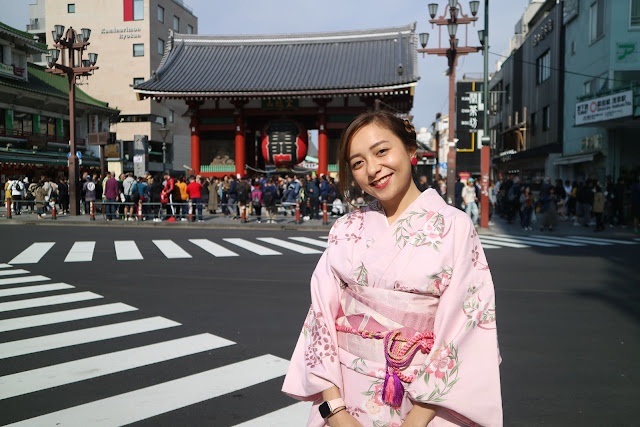






















































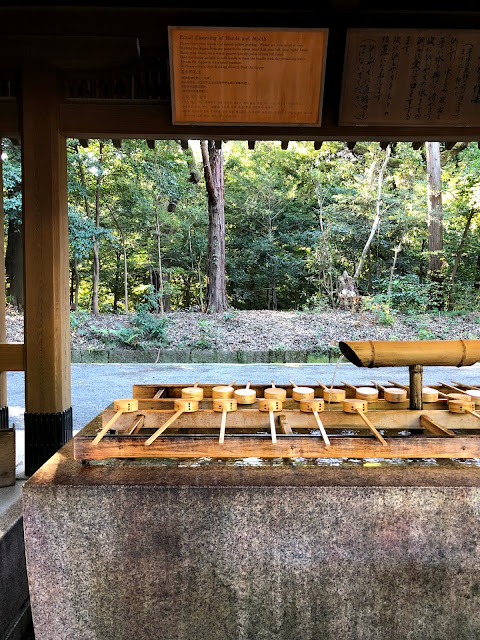





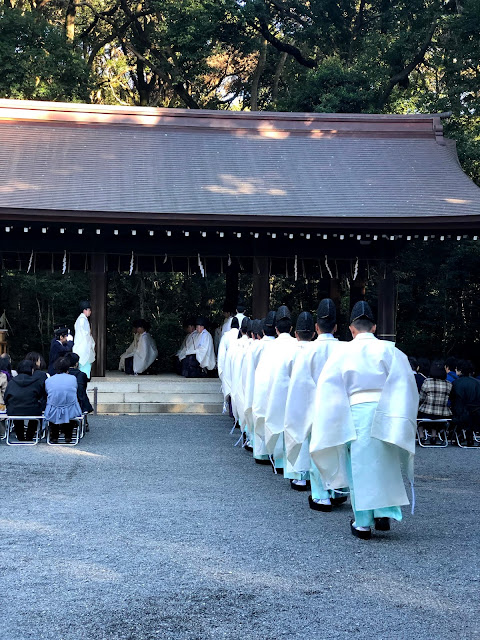























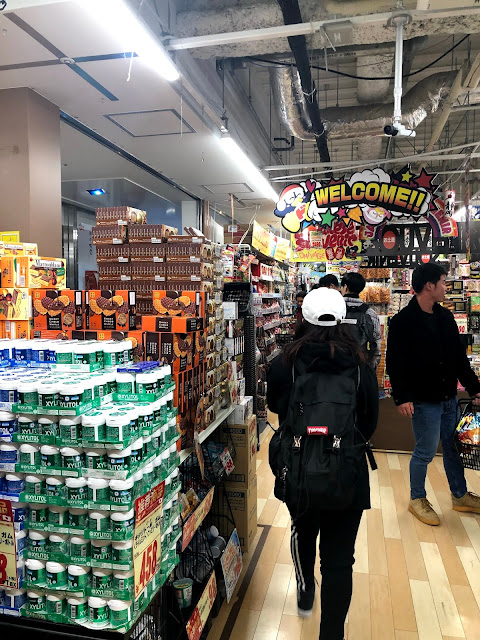






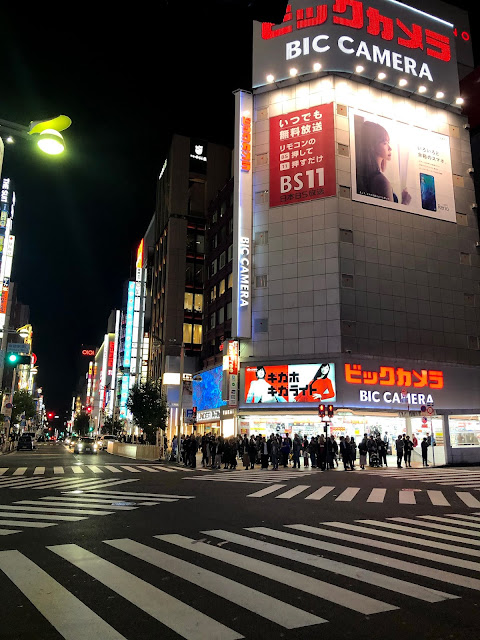





















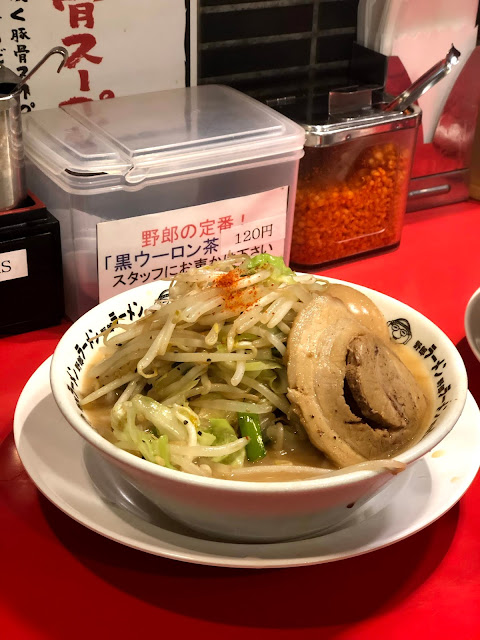














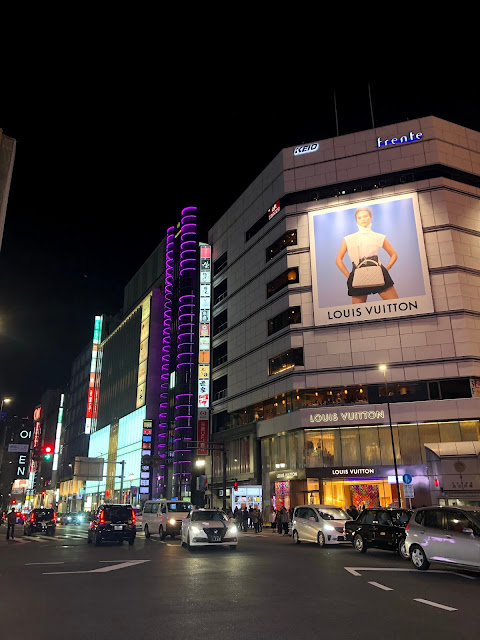








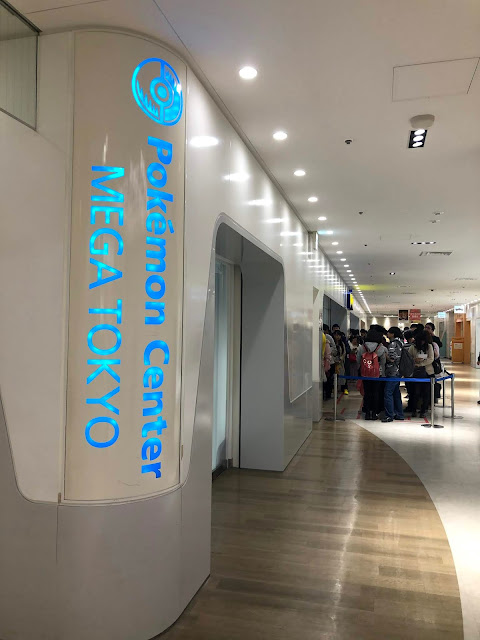































Comments
Post a Comment